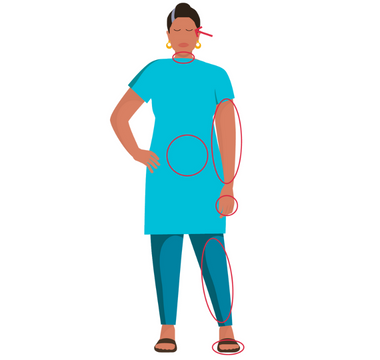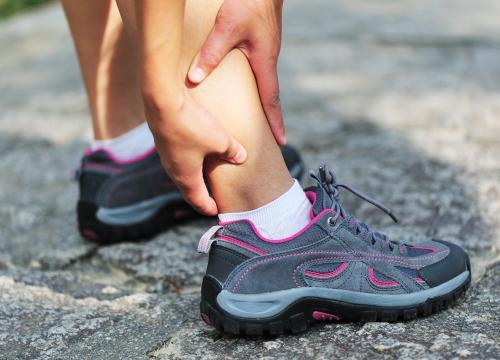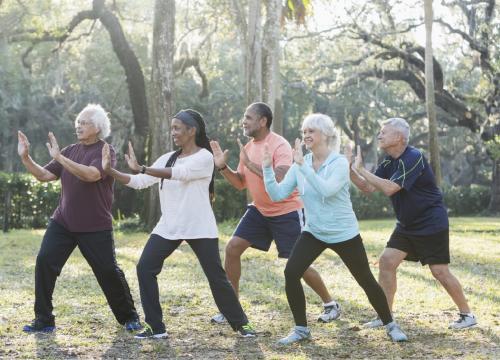Dystonia

Curled, clenched toes or a painful cramped foot are telltale signs of dystonia. Dystonia is a sustained or repetitive muscle twisting, spasm or cramp that can occur at different times of day and in different stages of Parkinson’s disease (PD). Dystonia is a common early symptom of young-onset Parkinson’s, but it can appear during any stage of Parkinson’s.
What is dystonia?
Dystonia often starts when you try to perform an action with the affected body part. For example, if you have dystonia of the foot, you may be fine when seated, but if you start to walk, you may develop toe curling or foot inversion (turning in of the foot or ankle). Some dystonia happens unrelated to an action or movement.
People with PD often experience a painful dystonia on the side of their body with more Parkinson’s symptoms. This usually occurs first thing in the morning, when dopamine levels are at their lowest as nighttime medications wear off. This painful cramp usually goes away after the first daily dose of Parkinson’s medications.
Less commonly, dystonia can affect other body parts and come and go throughout the day, not relating to timing of medication at all. It can cause forceful twisting movements that, for example, can pull the head to the side or toward the chest.
Although dystonia can be a Parkinson’s symptom, people can experience dystonia without PD. Dystonia movements are different from dyskinesia (flowing, writhing movements that tend not to be painful).
Parts of the Body Affected by Dystonia
People with Parkinson's can experience this disease-related cramping or clenching differently. Areas impacted include:
-

Arms, hands, legs and feet: Involuntary movements, spasms or twisting and "curling"
- Neck: May twist uncomfortably, causing the head to be pulled down or to the side. This is called cervical dystonia or spasmodic torticollis
- Muscles around the eyes: May squeeze involuntarily, leading to a person blinking too much or having difficulty opening the eyes – also called blepharospasm.
- Vocal cords and swallowing muscles: May cause a person's voice to sound softened, hoarse or breathy
- Jaw: May open or close forcefully or there may be grimacing of the face
- Abdominal wall: May cause sustained contractions, involuntary, writhing movements of the abdominal wall, or grimacing of the face
Managing Dystonia
It can be helpful to keep track of when dystonia occurs to figure out if there is a relationship between the onset of dystonia and the timing of your medication. Your doctor may ask you these questions to see if there is a pattern:
- Do you have dystonia symptoms when levodopa (Sinemet) is at its peak effect (“on” period)?
- Do symptoms happen before the first dose in the morning or when medication is wearing off?
With your physician’s guidance, adjusting the dose or frequency of medication may help relieve dystonia. For example, if you have morning dystonia, which occurs before your first dose of levodopa kicks in, your doctor may add a bedtime dose of controlled-release carbidopa-levodopa or a long-acting dopamine agonist.
Tips for Living with Dystonia
- Learn about dystonia and treatment options with our book Managing Parkinson’s Mid-Stride.
- Work with your doctor to find the best treatment for you.
- Meet with a physical and/or occupational therapist to identify strategies to strengthen and stretch the impacted area.
- Pursue activities you enjoy and pace yourself during social, physical and creative activities. Consider calming activities such as meditation, Yoga or Tai Chi.
- Join a Parkinson's support group in your area.
Get Connected
Connect with others who are living with Parkinson’s and dystonia through our online forum, PD Conversations.
Page reviewed by Dr. Kathryn P Moore, Movement Disorders neurologist at Duke Health, a Parkinson's Foundation Center of Excellence.
Related Materials
Related Blog Posts

Strategies and Tips for Dealing with Dystonia

